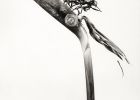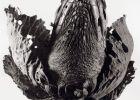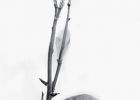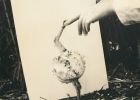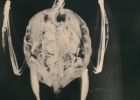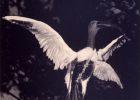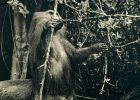Flusser Studies 13 - May 2012
Como explicar a arte / Cómo explicar el arte
Chronologie eines kuratorischen Scheiterns / Cronologia de un fracaso curatorial
This text focusing on Flusser’s conceptual commitment to the 12th Biennial of São Paulo is taken from the dissertation Flusser und die Kunst which examines the relevance of art and media theory in the work of Vilém Flusser. Between June 1972 and March 1973 Flusser tried to put into practice his ideas for an art exhibition. For this purpose he traveled through Europe and got in touch with numerous artists and theorists, such as René Berger and Abraham A. Moles. During this crucial period Flusser decided to leave Brazil. Major changes can also be identified in his thinking. Although he remained true to his communicational perspective aesthetics and art became increasingly important. In addition to this, some of his most relevant theoretical considerations about media can be traced back to this important period of his life.
Vilém Flusser: Brasil y la búsqueda del sujeto-proyecto
Vilém Flusser’s intellectual and academic development took place during thirty one years he lived in Brazil. This period was especially relevant in the consolidation of his philosophical projects. This essay works on the hypothesis that Flusser’s analysis of the human condition in the post-historic, post-human, and post-modern ages, as well as the phenomenological search of what he named the new kind of human being, has its roots in this Brazilian period. One of the most read and analyzed subjects of the last European period of this author – the transformation of the subject into a project – acquires new meanings if it is considered and approached from the internal logic of the philosophical bond between these two stages or periods.
Bazin, Flusser y la Estética de la fotografia / Bazin, Flusser and the Aesthetics of Photography
Both the film theoretician Bazin and the philosopher of photography Flusser follow a well-known tradition according to which aesthetic experience belongs in the realm of the extraordinary. In this way, that which makes a photograph an aesthetic object is its link to the extraordinary. Nevertheless, Flusser deals with photography within the frame of a general theory concerning technical images. Such images have, according to him, a quantitative structure. Consequently, the extraordinary character of photography would vary in a quantitative way. Furthermore, again according to Flusser, there is a reversal of meaning taking place within the realm of technical images: the technical image is existentially meaningful in itself, not because of what it represents. So, in the case of photography the meaning vector does not point to the world but to the image itself: the image is real, not its object. Of course, this idea implies a complete break with Bazin’s ontology of the photographic image. According to Bazin the image and its object share the same nature, the way a fingerprint does. Photographs, furthermore, awaken our admiration for the object, and are mostly used only for that.
Las Matemáticas en el Pensamiento de Vilém Flusser
This paper aims to establish the importance of mathematical thinking in the work of Vilém Flusser. For this purpose it highlights the concept of the staircase of abstraction with which the Czech German philosopher finishes by reversing the top of the traditional pyramid of knowledge, we know from Plato and Aristotle. It also assumes an implicit cultural revolution in the refinement of the numerical element in a process of gradual abandonment of the purely alphabetic code, highlighting the new key code within the technological and telematic culture and uses the concepts of game theory, of probability theory and computing to analyze society and culture. Of particular importance is the affirmation of a new kind of imagination, a projective one. Today’s society and culture cannot be understood without resorting to the concepts and results coined and made in the course of developing a type of thinking entirely dominated by the mathematics.
Juego e imaginación en Vilém Flusser
In several texts Vilém Flusser argues that if we had to define some specificity that characterizes the human being nowadays it would be homo ludens, because of the multiple cultural revolutions that have occurred, which have radically altered man’s existence, especially his imagination. The argument outlined in this paper is that the category of play not only reveals a specificity of contemporary man, but also represents his philosophical gesture. It is a central notion for Flusser’s criticism of the apparatus as a technical device.
Hacia una cultura crítica de la televisión – o los medios de comunicación masivos en V. Flusser y G. Anders
This paper focuses on theoretical analogies in the work of Günther Anders and Vilém Flusser. An aspect that is relevant for both writers is the growing importance of mass-media – especially radio and television – shaping more and more the cultural climate of the present era. Mass-media tend to restrict our everyday experience of reality, creating a phantom, matrix-like reality effacing and substituting the world. Unlike Günther Anders, Vilém Flusser believes in the democratic possibilities of dialogue that can turn media into a creative affair.
„Para documentar algo que no existe.“ Vilém Flusser – Joan Fontcuberta: una colaboración / „To document something which does not exist.“ Vilém Flusser – Joan Fontcuberta: A Collaboration
This paper is not only dedicated to Flusser’s and Fontcuberta’s letter exchange between 1984 and 1988, it also contains an analysis of their theoretical view of the practice of photography. Joan Fontcuberta wrote on Flusser’s philosophy of photography in a series of texts mainly focusing on its relevance for the work of the avant-garde photographer and the ontological status of the photographic image. Between 1984 and 1988 Flusser wrote a few texts that are directly linked to the work of Fontcuberta: the essays Releaser and Counter-vision as well as an introduction to Fontcuberta’s Herbarium published in 1985. These texts and their relevance for the relationship between Fontcuberta and Flusser and for a definition of the status of photography situated on the border of science and art are also discussed in the paper. Flusser asked Fontcuberta to take a picture of his ‘Bibliophagus convictus’ a hybrid insect between a bee and an ant. This picture, however, was never taken because of lack of time.
